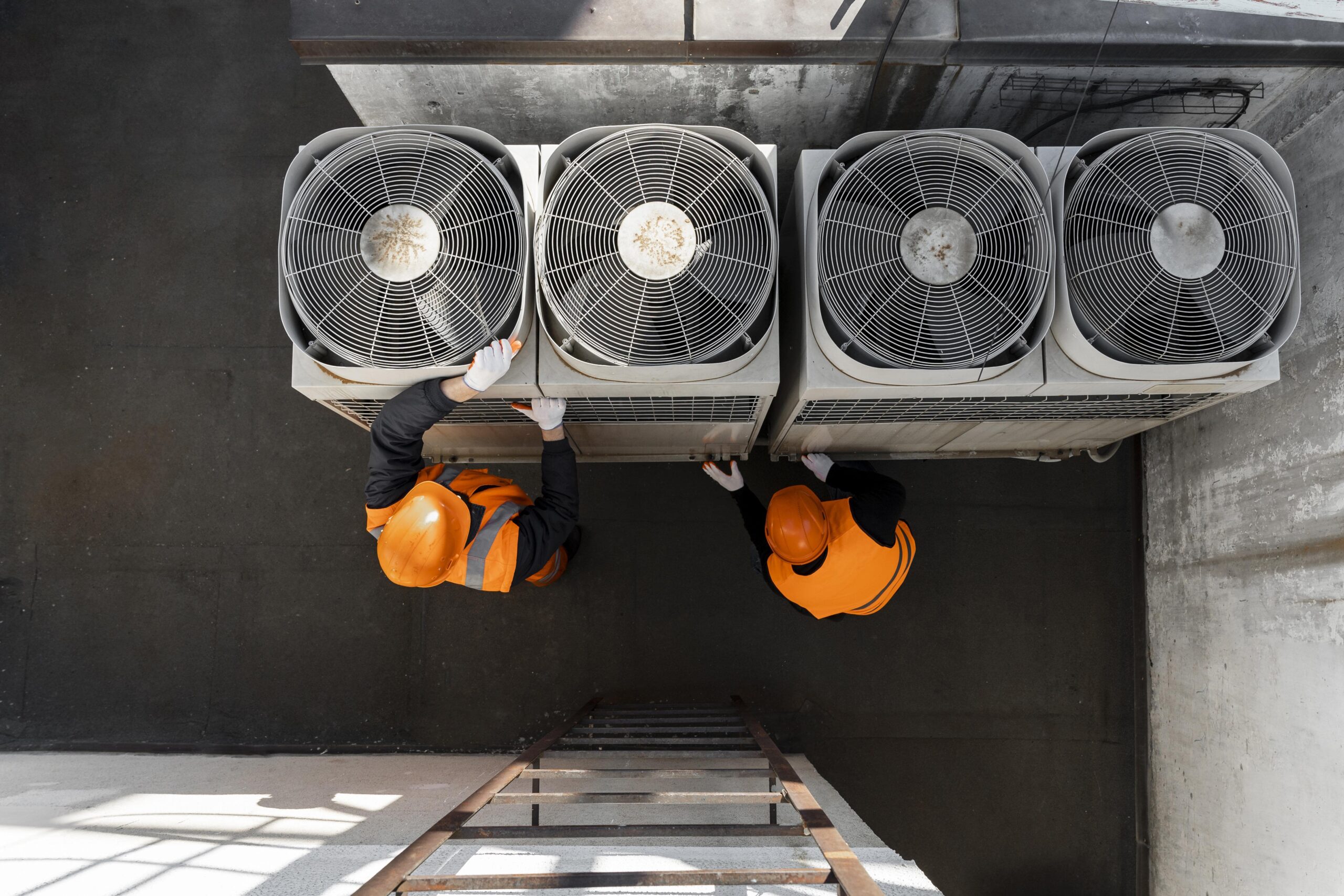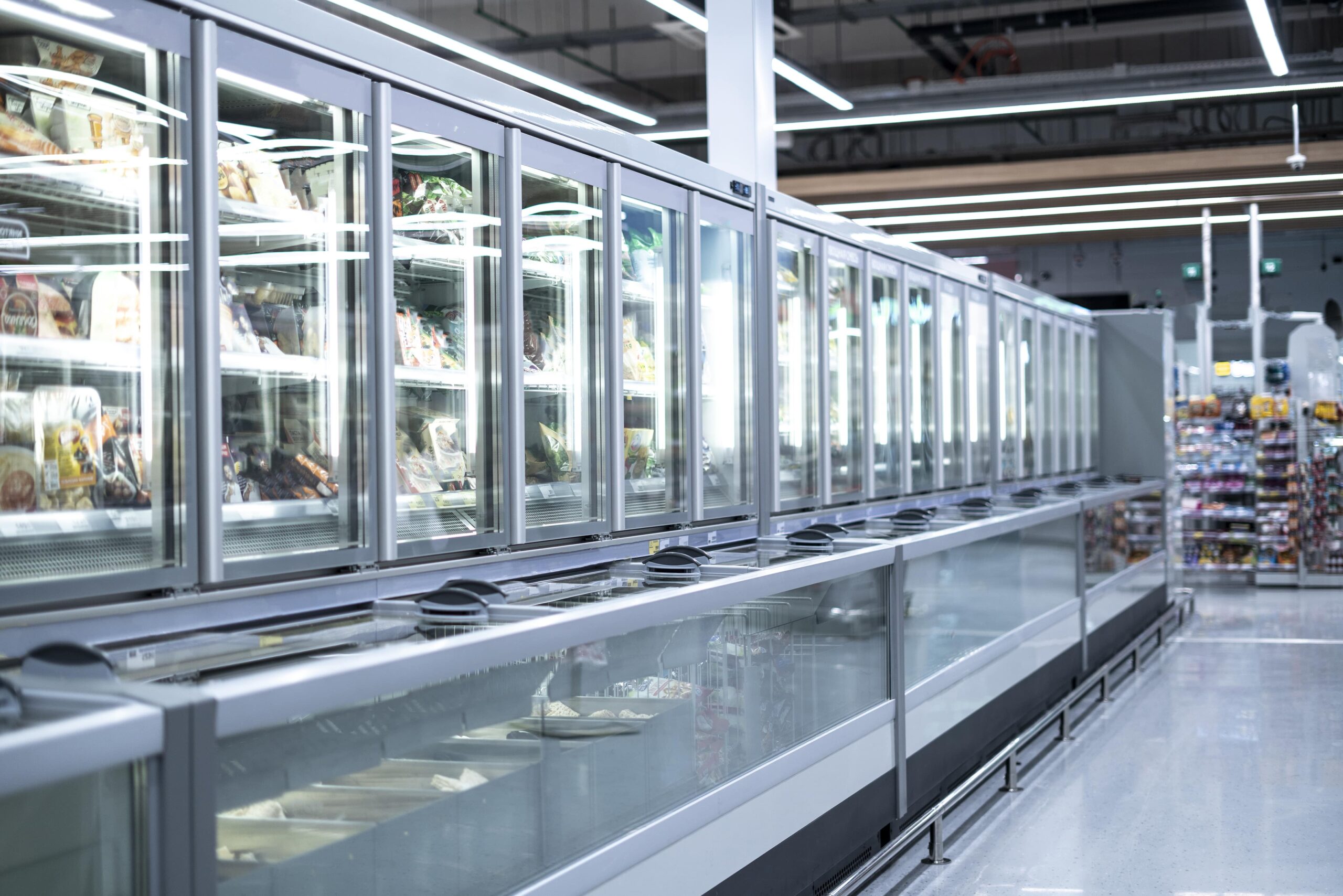How to Cool a Warehouse
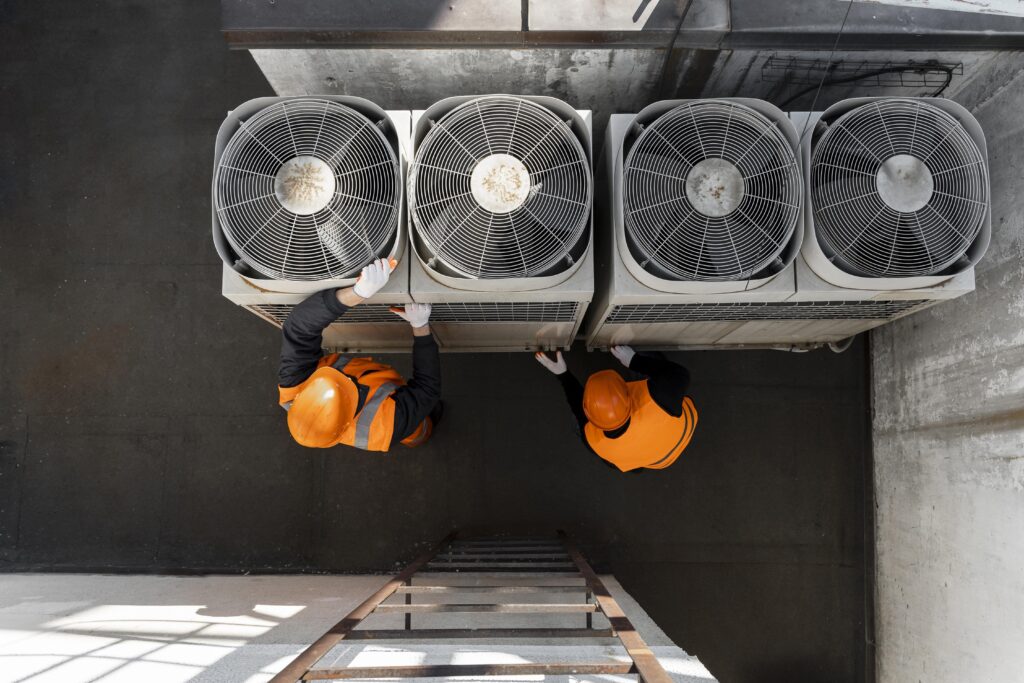
Managing temperatures in a commercial warehouse is no small task, especially during WA’s scorching summers. With high ceilings, minimal insulation, wide open spaces, and frequent roller door use, keeping things cool becomes a daily operational challenge.
If you’re trying to figure out how to cool a warehouse effectively, the solution goes beyond just installing an air conditioner. If your warehouse suffers from hot spots, high energy bills or overheating equipment, it’s likely time to reconsider your cooling setup.
This guide explores why warehouse cooling is so difficult, which systems work best for WA’s dry climate, and how to future-proof your operations with the right commercial solution.
Why Is It So Hard to Keep a Warehouse Cool?
Unlike office or retail environments, warehouses lack design considerations for temperature control. They’re large, industrial spaces that trap heat, struggle with airflow, and rarely have proper insulation.
Some of the most common warehouse cooling issues include:
- Solar heat gain from expansive metal roofing
- Poor ventilation, especially in racked or enclosed sections
- Uneven temperature zones caused by machinery or occupancy levels
- Inadequate or aging cooling infrastructure
In Perth, where summer temperatures regularly push beyond 35°C, these challenges can quickly lead to discomfort, stock spoilage, and excessive energy costs. Understanding how to cool a warehouse under these conditions means addressing both structural and mechanical factors.
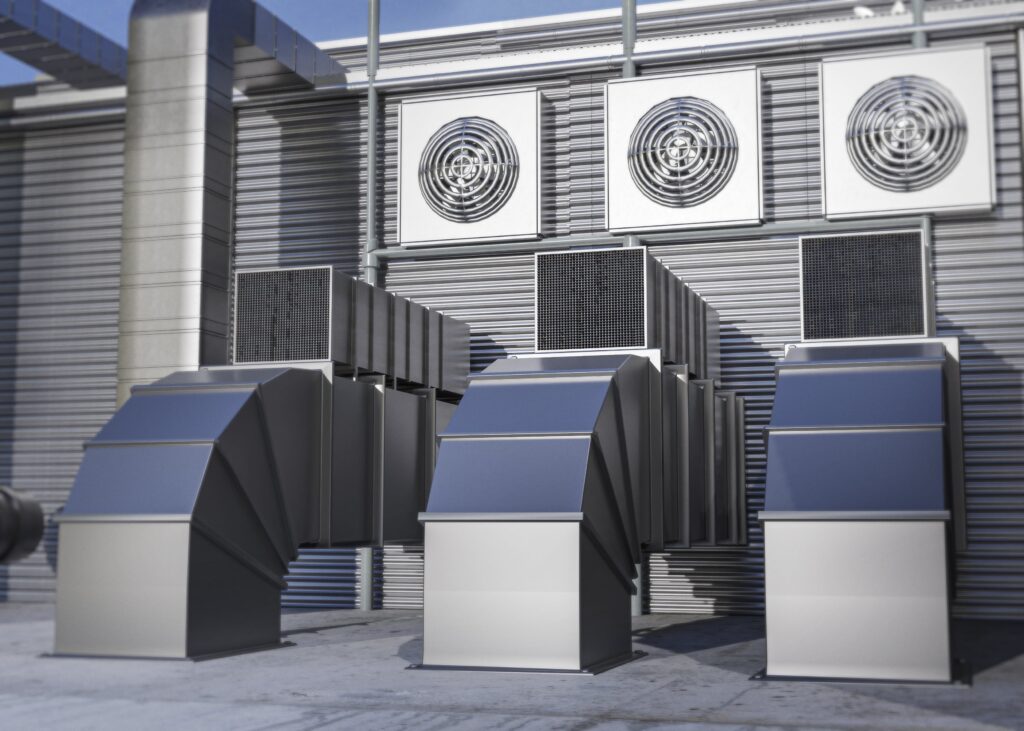
Cooling Systems That Work in Warehouse Environments
There’s no one-size-fits-all cooling solution. The most effective setup depends on your warehouse’s size, layout, usage, and compliance needs. Here’s a look at some of the top options for how to cool a warehouse in WA.
Evaporative Cooling Systems
Evaporative coolers are popular in Perth thanks to their low running costs and suitability for dry climates. These systems draw warm air through wet filter pads, cooling it before circulating it throughout the space.
They work best in well-ventilated, open-plan warehouses and can significantly reduce indoor temperatures, especially when paired with roof vents or extraction fans. However, sealed environments or the need for precise climate control reduce their effectiveness.
Ducted HVAC Systems
For operations requiring consistent temperature control, such as food storage, manufacturing lines or pharmaceutical facilities, HVAC systems offer a more controlled approach.
Smart zoning enables these systems to target cooling precisely where needed, boosting comfort and cutting energy waste.
They’re more expensive to install and run, but offer significant benefits in terms of accuracy, filtration, and compliance.
HVLS Fans
High-volume, low-speed (HVLS) fans move air slowly but powerfully, helping to break up hot air pockets and improve comfort. While they don’t lower air temperature, they enhance evaporation and airflow, making other cooling systems more effective.
They’re ideal for large, high-ceilinged warehouses and are especially useful in conjunction with evaporative systems or HVAC setups.
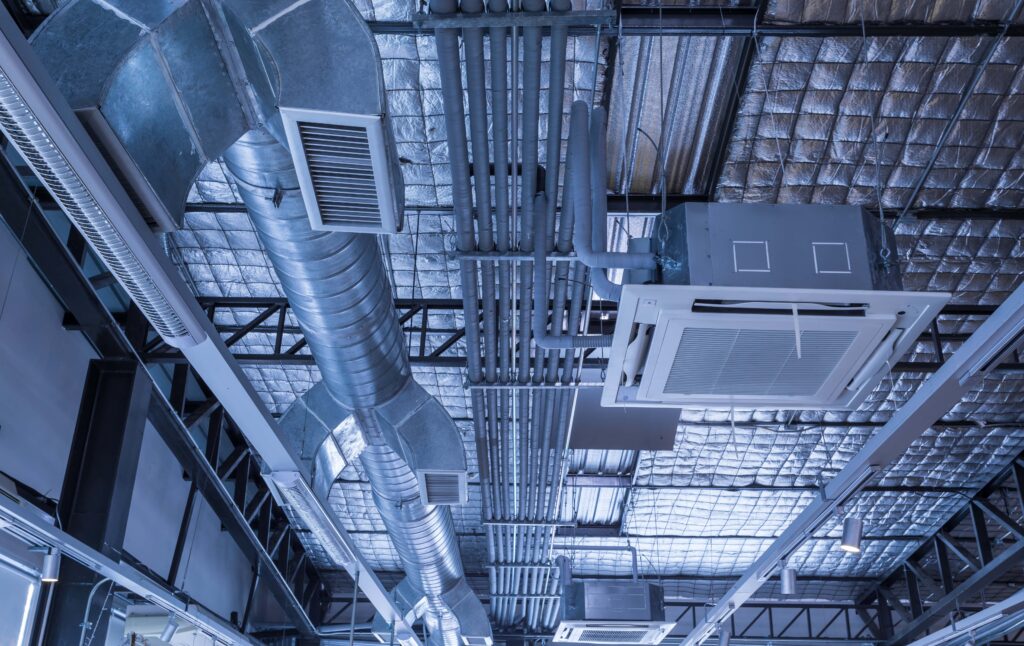
Zoned or Hybrid Setups
The most energy-efficient approach often combines multiple technologies. For example, evaporative cooling can manage general airflow, while ducted air conditioning targets critical zones like packing stations or office mezzanines.
Zoning allows for greater control, so you’re only cooling occupied or sensitive areas, resulting in lower energy use and a more tailored environment. If you’re weighing up how to cool a warehouse with variable demands, a hybrid system may be the most cost-effective solution.
What Should You Consider Before Choosing a System?
Before committing to a new cooling solution, it’s important to understand the thermal profile of your space. Factors like internal heat load, occupancy patterns, ventilation pathways and product sensitivity all influence the system design.
A professional heat load assessment considers:
- Warehouse size and ceiling height
- Type of goods stored
- Number and location of staff workstations
- Heat-emitting equipment (e.g. forklifts, lighting, machinery)
- Building orientation and insulation
This helps determine which cooling methods will be most effective and ensures your investment delivers long-term value.
Why Professional Design and Installation Matters
Cooling a warehouse properly isn’t just about airflow; it’s about compliance, comfort and cost. Poorly selected systems often underperform, break down under peak loads or fail to meet industry standards.
That’s where Perth Air & Power Solutions comes in. We design and install commercial-grade systems tailored to meet the real-world demands of WA warehousing. Our dual-certified technicians understand both electrical infrastructure and HVAC performance, ensuring every component is compliant, safe, and built to last.
Our service covers everything from system design and installation to routine maintenance and emergency repairs. Whether you’re upgrading an ageing setup or fitting out a new facility, we deliver complete solutions tailored to your space and industry.
Is It Time to Rethink How to Cool a Warehouse?
If your team is sweating through summer, or you’re seeing the signs of equipment fatigue and rising power bills, it may be time to make a change. An inefficient system doesn’t just impact comfort, it costs you in productivity, downtime and long-term operational spend.
Upgrading your warehouse cooling system improves working conditions, supports compliance, and safeguards your assets. And with Perth Air & Power Solutions, it’s all handled by one expert team.
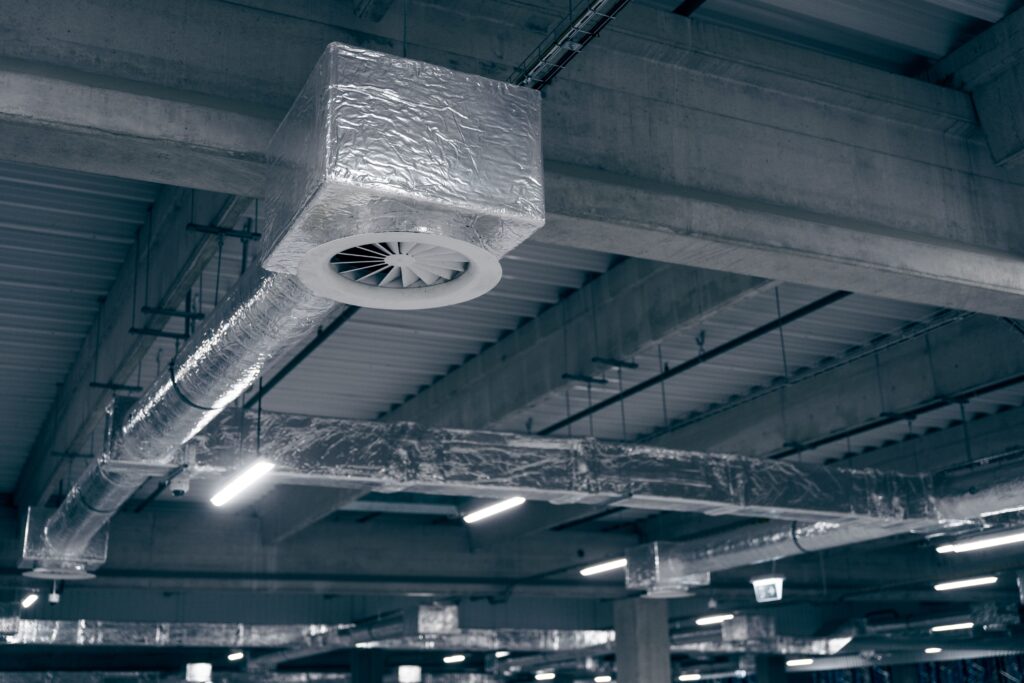
Cool Your Warehouse With Confidence
At Perth Air & Power Solutions, we help commercial clients across Perth find smarter, more sustainable ways to stay cool. Whether you need a full HVAC fit-out, evaporative upgrade or system audit, we’ll deliver a solution that fits your warehouse and your business goals.
Contact our team today to book a same-day consultation and discover what a properly cooled warehouse can do for your operations. We’ll help you determine how to cool a warehouse effectively, efficiently, and with confidence.









